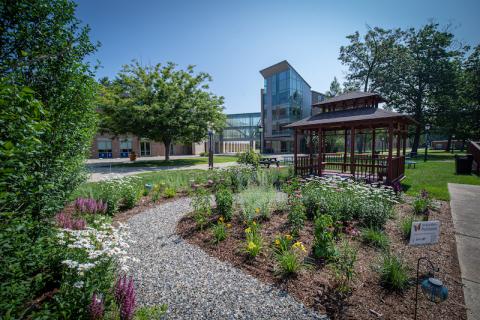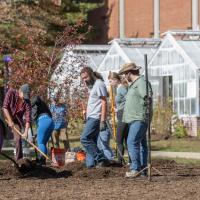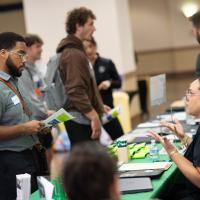
Interfaith Meditation Garden Provides Spiritual Reflection, Ecological Awareness

There is a growing body of evidence that suggests therapeutic gardens with contemplative features creates a positive outlook and improved mood. The recently completed Albert and Amelia Interfaith Center’s Meditation Garden aims to provide a safe, empathetic, religious, and spiritual support to the campus body and surrounding community.
The plans for the Interfaith Meditation Garden were made three years ago in collaboration with the Interfaith Chaplains Council and student leaders of the faith-based organizations who were members of Interfaith Advisory Council. Students shared ideas on the location of the project and offered suggestions for native plantings that represent a variety of their faith traditions.
The garden also brings ecological awareness by featuring a diverse collection of trees and plants and shrubs. Benches provide visitors with the opportunity to sit, pray, meditate, and commune with nature. A bird house, water fountain, a peace totem, and various statues are featured on a prayer path winding along the side of the Interfaith Center. A pollinator garden serves to attract native insects and wildlife complementing a gazebo featuring wood carved faith symbols representing various religious traditions.
Father Warren J. Savage, Director and Catholic Chaplain of the Interfaith Center, praised community members and volunteers that donated time and materials to build the garden. “I am grateful to Colleen Mollica, Campus Minister, David and Lise Letellier, and the members of the Interfaith community who shared their time, talent, and treasure to help with this project.”
The garden represents the Interfaith Center’s mission to, “to support religious and spiritual life and to promote respect for and understanding of diverse religious traditions at Westfield State University.” As the campus body continues to expand in diverse peoples of various races, cultures, ethnicities, sexualities, and gender identities, this undertaking represents their ideals and offers the University a dedicated place for individuals to reflect and breathe.


